BUILDING TRAINING EXPERIENCES THAT STICK
“Learning” is the one constant in an ever-changing world, whether it’s in business, social services or education. And with rapid changes in all of these sectors, making sure that learning is maximized is critical. With advances in neuroscience, we are better equipped to target optimal learning in order to effectively activate the hippocampus – the “air traffic control” system in the brain that plays a vital role in both recall and recognition memories, each of which directly support learning, understanding and application.
In the past, most learning was centered around a big “event” – think seminar, or class. Concepts and principles presented at such an event are typically introduced once, typically without further interactions. These one-time events may be intensive, but have been shown to have little long-term retention, even if the quality of information and the experience are rated highly.
Since The Pacific Institute’s inception, in 1971, we have striven to present our cognitive education in the most effective manner possible. From the traditional bodies-in-seats days of the 70’s and 80’s (even the 90’s) through today’s webinars and online presentations, practical application of TPI’s concepts and principles have been based on what we have known about how the brain functions. Not surprisingly, it is in line with the AGES model to optimize how the brain actually learns and remembers. With the advances in neuroscience research, we continue to fine-tune our approach and presentation to ensure maximum retention, engagement and learning.

You see, the brain does not process information the same across its different regions. Recall memory and Recognition memory are very different. Recall memory has no external support (outside stimulus), but it is the type of memory we want to engage for long-term retention. (Recognition memory has the external support, however, it requires some outside stimulus to be utilized, i.e. an image, scent or sound that triggers a memory.) What we are aiming for is referred to as “coherence” – the “what” part of learning. This is where the AGES model comes into play, as it effectively incorporates the hippocampus to heighten learning and retention.
AGES in a Nutshell
In 2010, Lila Davachi, Ph.D. and colleagues presented Attention, Generation, Emotion and Spacing (AGES) as four vital components to learning.
Attention has three facets, when it comes to learning:
There seems to be a 20-minute limit to the brain’s attention abilities, at which time attention drops off. The brain needs a different focus, in order to stay engaged in the learning. At the 15- to 20-minute mark, the facilitator can either provide time for reflection, or provide participants with something completely different to re-engage the brain.
Multi-tasking appears to be the enemy of learning. It is also the enemy of memory. In an experiment with “media multitaskers,” (as presented to the NeuroLeadership Institute’s 2017 conference), there was a huge drop-off in memory with those persons classified as high media multitaskers. In other words, multitasking has the same effect on learning as do outside distractions. Even taking notes on a laptop or tablet gets in the way of learning and retention, and has been shown to lower test scores after a lecture.
Attention is especially susceptible to interference when presented with the same modalities, like reading language and hearing language. So, we want to engage as many of the different learning styles when presenting information, or during the application of information.
When it comes to Attention, there are two separate brain systems that seem to be in competition with one another. One system is driven by goals and intentions, which allows us to focus on what we want to learn. The other deals with the sensory input coming from the world around us, and forces us to pay attention to this input, thereby dragging our attention away from what we are supposed to be learning. (We recognize this as the Reticular Activating System (RAS) in action. This is a netlike grouping of cells, which serves as a filter, searching out information of value and threat. It is a system we cannot do without, in order to survive.)
With video-based education, TPI is constantly looking for that balance between dissemination of information (video segments) and discovery and application of vital concepts. Shorter video segments, providing concise yet thorough explanations of concepts and principles, allow for longer periods of personal and group discovery through discussions, and direct applications to current personal or organizational challenges. All serve to support vital Attention to maximize the building of strong neural pathways.

Interestingly, as pressure mounts to make learning available in smaller and smaller bites, dividing up a single presentation of information acts just like distraction on learning. It is the same as if a colleague walked into your office and interrupted you as you worked. Moving forward, micro-learning, as in two-minute segments, can compensate for this somewhat, as long as those two minutes are totally focused on learning a single task or concept.
Generation is all about making personal connections to the material being presented. It is the act of creating and sharing personal connections that seems to cement learning. In fact, “…it is the act of generation that matters and not whether the connections that are made are brilliant. When we take the time and effort to generate knowledge and find an answer, rather than just reading it, our memory retention is increased.”
In the past, Lou Tice provided the connections with his stories – most of which were extremely humorous – of how he himself used the concepts he was teaching. These days, this is where the discussion times are of vital importance and address Attention and Generation at the same time. In the traditional seminar setting, these time periods are programmed into the facilitation. Learning is magnified because of the shared experiences of others in the group. This is referred to as “social information generation” with the AGES model, and creates a richer network of connections in the brain for the material being presented. With the move to engage learners across online implementations, finding effective ways to replicate these rich discussions is vitally important. Learning cohorts, “huddle” groups and scheduled coaching conference calls are just a few of the options we employ.
A second method of enhancing learning is “metacognition generation” which literally means thinking about what we are thinking – one of the primary benefits of the Institute’s cognitive education. Testing what we have learned, getting feedback from a wrong answer, leads to better retention of the information than simply studying the correct answer. In other words, we learn more from our mistakes. In fact, making “mistakes” actually equals learning. This is a function of a growth mindset, whereas a fixed mindset gets preoccupied with the mistake, or the failure.
“Insight generation” is a well-proven facet of TPI implementations. It’s the “ah-ha!” moment when the brain makes a connection between the new information (concept or principle) and a past experience. Typically, these happen during the reflective time that is built in with each video unit of TPI’s education, but they can also happen during the rich discussions that happen following reflection. These moments are energizing and engage us in what we are learning, and act as springboards for new ideas and applications. When time is allowed for generation, learners have the opportunity to understand their thought processes in general, and then about the specific challenges before them.
Emotion makes a difference in how long learning lasts, and “positivity is better than negativity.” With emotional arousal, “the hippocampus gets additional signals from brain regions that respond to arousing stimuli.” As the hippocampus works, it activates neural networks until new memories are created. With enough emotional stimuli, the hippocampus becomes more effective at its memory-making job. However, with too much emotion, distraction occurs leading to reduced attention, and thus, reduced learning. Stress actually shuts down the pre-frontal cortex, site of executive decision making.

Since we are primed to pay attention to threats and respond to them immediately (there goes the RAS again), we want to be aware of this particular type of distraction. It’s not something we want to get rid of, since the RAS keeps us safe from threats and alerts us to information of value. What we want to do is start with a positive foundation to our thought processes, which has been shown to enhance “creativity, insight, and to expand perception – all of which are helpful in a learning context.”
For TPI’s education, the essential concepts of “want-to” versus “have-to” go a long way toward diminishing the influence of negative emotions when it comes to learning. One is engaged in the learning, liberated to move to a growth mindset. As well, learning about self-talk and its tremendous effect on habits and attitudes, comfort zones and our beliefs about our abilities to learn, compounds the retention of new memories. Self-talk becomes an ally in regulating our emotions toward learning new information. It helps us find the personal value – the WIIFM (What’s In It For Me).
One of the key aspects of TPI’s successful implementation approach is the elimination of the “fear factor” that naturally comes from learning something new – especially with a group of one’s peers or one’s supervisors. When dealing with highly passive-aggressive organizational cultures, it is almost a guarantee that no shared experiences or learning will take place, if participants fear or cannot trust others in the room. Most people desperately want to trust their peers. Creating a “fear-free zone” allows for greater sharing of knowledge and experience, and enhances retained learning for the long haul.
Spacing is the one area of push-back from clients that causes the most dissonance with effective learning and application. Most organizations want to spend as little time as possible with their people being “offline” from their jobs. In a practical world, this makes sense. At the same time, Spacing is perhaps the most vital aspect of the AGES model, because the brain needs time to process everything it is taking in. This bears repeating: the brain needs time to process the learning. Recall memories typically are not made in an instant. They require reinforcement, and this happens over time.
So, how do we build in spacing when it comes to learning? In the current, traditional facilitation model employed by TPI, some of these spacing times are built in to the facilitation cycle. The post-video times for personal reflection are valuable, even if it is only five minutes. Moving from the personal reflection to the group discussions allows more time for recall memories to be created and reinforced. Small group discussions encourage diversity of thought and experience, which enhances dialogue and, ultimately, memory. Breaking into smaller groups for action learning exercises, then reporting back to the entire group creates participative learning opportunities. Coming back to previously taught material with connections to new learning (as happens in the video segments, by design), provides further spacing, and stronger connections to recall memories.
And believe it or not, sleep is a great spacer. “Sleep not only helps to strengthen memories, but also to actively forget irrelevant information, thus optimizing memory for what is relevant.” Learning is possible without sleep breaks, but with a sleep break, even the most challenging material is more easily learned and retained.

In an article in Scientific American (Summer 2017), writer Robert Stickgold references a study done by Jessica Payne (currently at the University of Notre Dame), which focused on memories about emotionally charged subjects. It turns out that “…it isn’t just emotional memories that are preferentially enhanced during sleep. It appears that anything you think is important will be selectively retained while you are asleep.” Learning, that is tagged as important by the learner, is strengthened during sleep, proving once again that spacing is vital to the learning process.
Davachi, et al, suggest building in specific time periods for spacing, to optimize learning and recall: one time on the order of days, once on the order of weeks, and once on the order of months. Revisiting information after a few days actually improved memory by a factor of 40% (on a test, six weeks after initial learning). Revisiting the information three times, with several days between each session, brought memory up by a factor of 55-60%.
This aspect of Spacing plays well into online learning situations, where additional material – especially application material – reinforces the concepts and principles learned, the recall memories, and the active use by individuals, teams and entire organizations. In short, engagement with TPI’s education rises, as do the results within our clients.
Conclusion
The manner in which The Pacific Institute has handled its implementations over the years is one thing that has set us apart. It isn’t just understanding the concepts and principles that drive the education. It is the effective application of the information, to real-life situations that present themselves to us every day, that sits at the very foundation of our client interventions.
Our implementations are designed to create Attention by alternating learning styles that keep the brain engaged and focused. Generation of connections between the material being presented and real-world applications allows for those “Ahha!” moments, those leaps in understanding, that lead to solutions. The very positive nature of the education itself – realizing that the brain works on pictures and the word “don’t” doesn’t process what you think it does – leverages a positive emotional experience for optimum engagement. And, finally, Spacing is built into each program in such a way as to ensure long-term learning, retention and application.
Individual, indeed group, interpretations vary in their applications. Solutions to challenges are rarely “black or white,” because of the different variables involved in every organization. The best solutions are neither quick nor speedy. For the most effective results, coming up with the proper solution to meet the challenge at hand requires focus and attention, opportunities to generate possible strategies, effectively handling the strong emotions that come with challenges and change, and space to allow the brains of all involved to solidify the neural pathways that create retained learning.
Biographies


Featured posts
May 16, 2023
May 16, 2023
May 16, 2023





